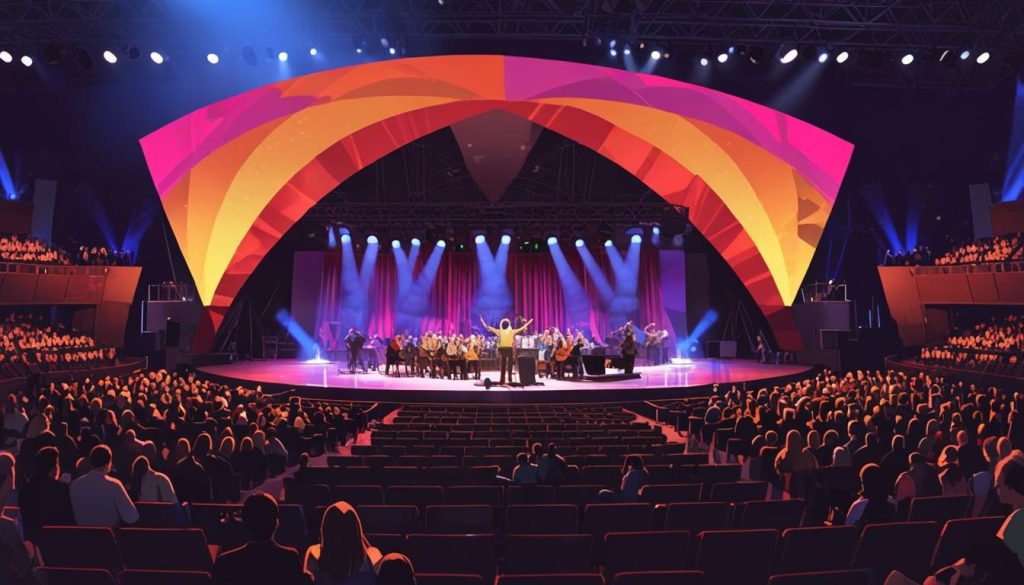The Sydney Opera House has made history as the first cultural venue worldwide to introduce Auracast broadcast audio, enhancing the live performance experience for individuals with hearing loss and promoting greater inclusivity.
The Sydney Opera House has made history by becoming the first cultural venue in the world to implement Auracast broadcast audio, an innovative assistive listening technology designed to significantly enhance the live performance experience for individuals with hearing loss. This permanent installation, which is powered by Bluetooth Low Energy (LE) audio, is regarded as a key advancement in removing barriers for the one in five people globally who are affected by hearing loss.
The rollout of Auracast at the Opera House commenced on the day of the launch event, setting a new benchmark for inclusivity within cultural settings. The collaboration involved GN, Hearing Australia, and the National Acoustic Laboratories, and demonstrates a commitment to improving accessibility. The technology aims to eradicate common obstacles that hearing aid users encounter during live performances, which often include distorted sound quality and restrictive seating arrangements tied to existing assistive listening systems.
At the launch event, TV presenter Osher Günsberg, a hearing aid wearer, welcomed a diverse group of attendees, including representatives from the audiology sector, the deaf and hearing loss community, and members of the media. They were all invited to participate in a live performance that was broadcast directly to hearing aids and earbuds, showcasing the system’s capabilities in real time.
The presence of industry giants such as Samsung Electronics, Google, and the Bluetooth Special Interest Group (SIG) highlighted the widespread support for Auracast technology and its implications for enhancing accessibility across public settings. Demonstrations of Auracast-enabled products provided insights into how this innovation can optimise listening experiences in various venues.
Marian Jones, one of the attendees and a hearing aid user, expressed her enthusiasm for the new technology. “Live music is one of life’s great joys. But like many people with hearing loss, I’ve found my enjoyment has been dulled by poor sound quality or being restricted to certain seats,” she noted. She elaborated on her experience, stating, “Hearing the beautiful music via Auracast was the crispest and clearest experience I’ve had in years. It was quite emotional to see the reactions from others with hearing loss at the performance. This is so important to drive forward accessibility.”
Auracast allows users to access high-quality audio broadcasts from a nearby transmitter directly through their hearing devices or other Auracast-compatible audio equipment. Peter Karlstromer, CEO of GN, expressed pride in the collaboration with the Sydney Opera House and associated partners, reinforcing the company’s commitment to making quality sound accessible to hearing aid users. “We are at the forefront of bringing Auracast to hearing aid wearers so they can easily connect to and enjoy great sound no matter where they are,” he asserted.
The Sydney Opera House has installed Auracast transmitters in several of its key venues, including the Western Foyer, Drama Theatre, Playhouse, and Studio, which are now equipped to deliver enhanced auditory experiences. GN has integrated this technology into its entire new ReSound and Beltone portfolio of hearing aids, promoting accessibility through a newly introduced app-based Auracast assistant. Additionally, attendees without hearing aids had the opportunity to experience Auracast through the Samsung Galaxy Buds3 Pro.
The event also featured a keynote address from Ingrid Dahl-Madsen, the Danish Ambassador to Australia and New Zealand, who acknowledged the significance of this collaboration as a step forward in hearing technology. She reaffirmed the connection between Denmark, known for its leadership in hearing technology innovation, and Australia, home to the iconic Sydney Opera House.
By introducing Auracast to its venues, the Sydney Opera House is not only setting a precedent for other cultural institutions but is also paving the way for a future where accessibility in public spaces becomes increasingly advanced and inclusive.
Source: Noah Wire Services





